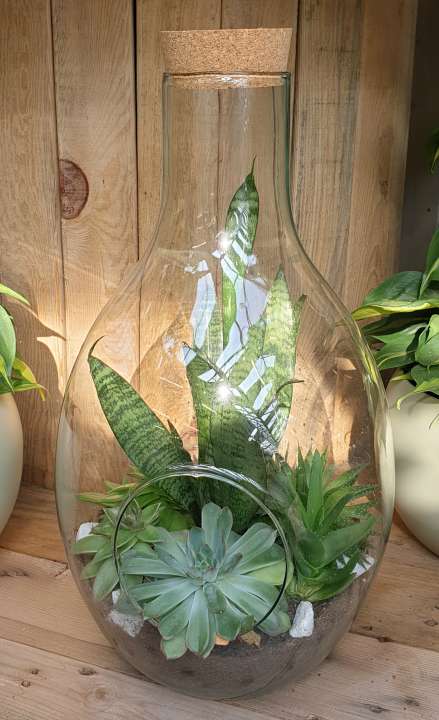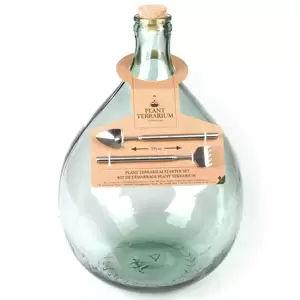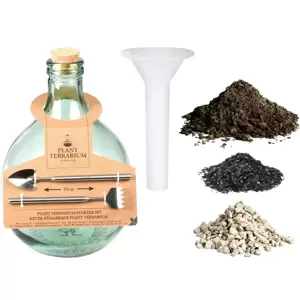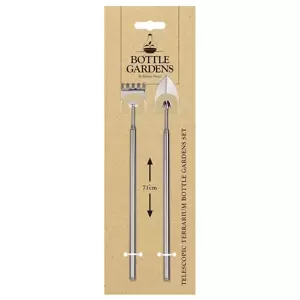 Making your own terrarium is fun and easy and they are just as easy to look after! Whatever the climate is in the rest of your home, inside your terrarium will be a continual oasis needing only indirect sunlight and the occasional spritz of water...they're the perfect way to bring a sense of the outdoors into your home. Small enough for any home to accommodate or a large focal point to a room, terrariums can come in all shapes and sizes.
Making your own terrarium is fun and easy and they are just as easy to look after! Whatever the climate is in the rest of your home, inside your terrarium will be a continual oasis needing only indirect sunlight and the occasional spritz of water...they're the perfect way to bring a sense of the outdoors into your home. Small enough for any home to accommodate or a large focal point to a room, terrariums can come in all shapes and sizes.
Here are our top tips for making your own terrarium:
Choosing a container
Your container needs to be made of clear glass or thick plastic in order to create the micro-climate that will help your new garden to thrive. There are a great range of purpose made containers available including bowls, bottles and hanging styles which are really popular at present. Or you can recycle a glass container of your choice, a coffee jar, vase or bottle can all make quirky terrariums. It will make planting your terrarium easier if your container has an opening large enough for you hand to fit through but you can always use tongs to plant it up if needed. Closed containers provide more humidity for the plants and are ideal for ferns. Containers with a permanent opening are better for cacti and succulents which prefer drier conditions.
Choosing your plants
The most important factor to consider when choosing your terrarium plants is the size...make sure they're not too big for your container! Ideally the plants should not touch the inside walls of the terrarium to allow air and moisture to circulate. Slow-growing foliage plants are best for your terrarium and choosing plants with of different sizes, leaf textures and foliage colour will add interest to your container. It is also best to choose plants which like similar environments to each other to make sure they're all happy in their new home! Cacti, Succulents and air plants for example will all thrive in a terrarium with less moisture, more air and plenty of natural light. Whereas Ferns and Pilea will do better together in a more humid terrarium with plenty of moisture.
Adding drainage layers
Your container will not have any drainage holes in the bottom so it's important to create a layer to keep any excess water away from the roots of your plants. You can create this layer with moss, small stones, gravel or glass chippings depending on your preference. Next add a small layer of activated charcoal, this will also help with drainage as well as fighting bacterial growth. You're now ready to add your compost, this should be at least as deep as the pots that your plants are in when purchased.
Perfect planting
It's important to think about the design and location of your terrarium when planting it up. Does it have a front and back? Will all sides be visible? You can then decide on the how to arrange your plants so that they can all be seen and your terrarium looks fabulous from every angle! Once you know where each plant is going all you need to do is dig out a little hole and place them in one by one. Any gaps between plants where you can see exposed soil can be filled with decorative stones, shells or moss, whichever you prefer. Use a spray bottle to water your terrarium ensuring that it doesn't get too wet, just damp and your done...sit back and enjoy your masterpiece!



